Translational Research
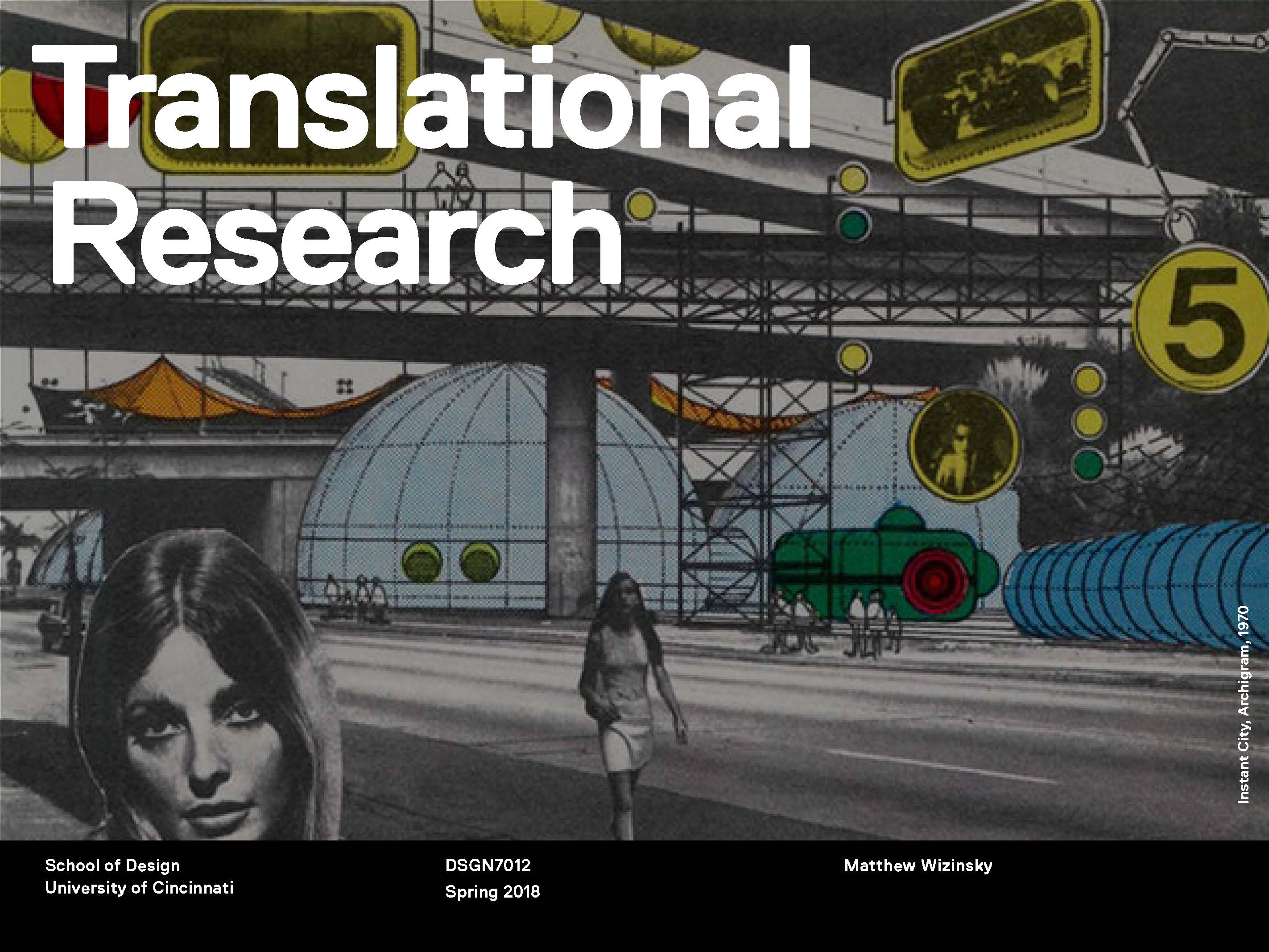
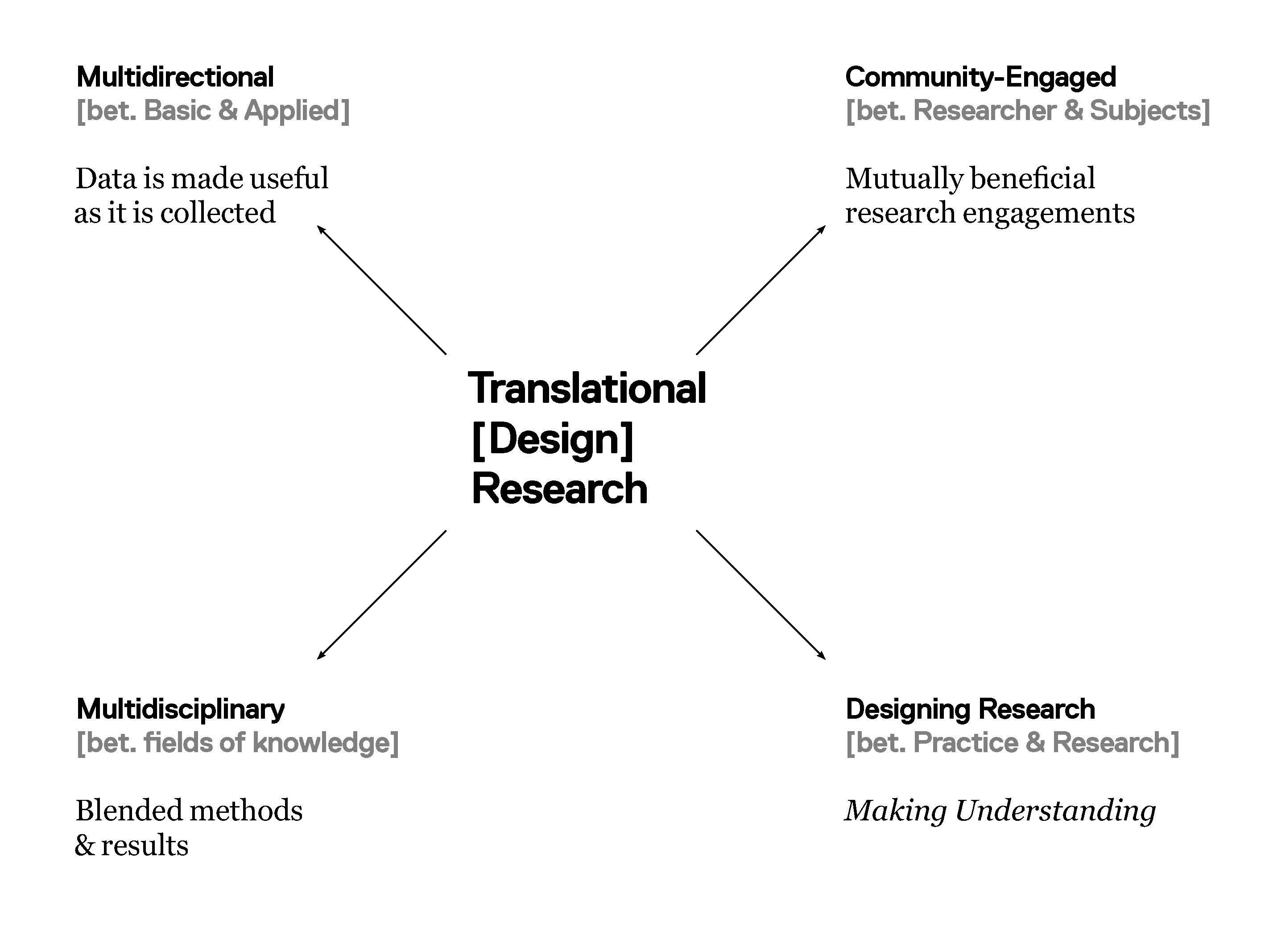
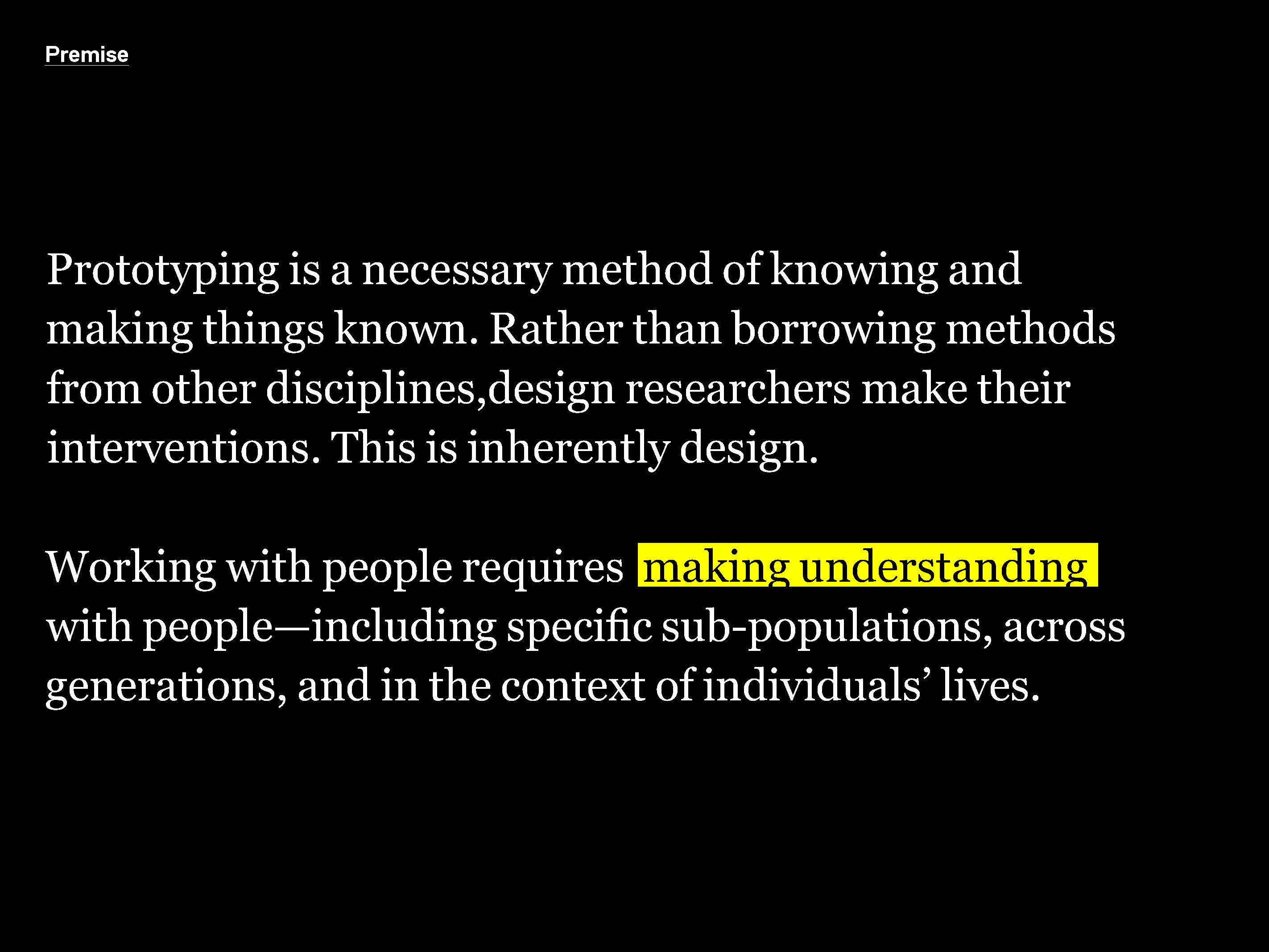
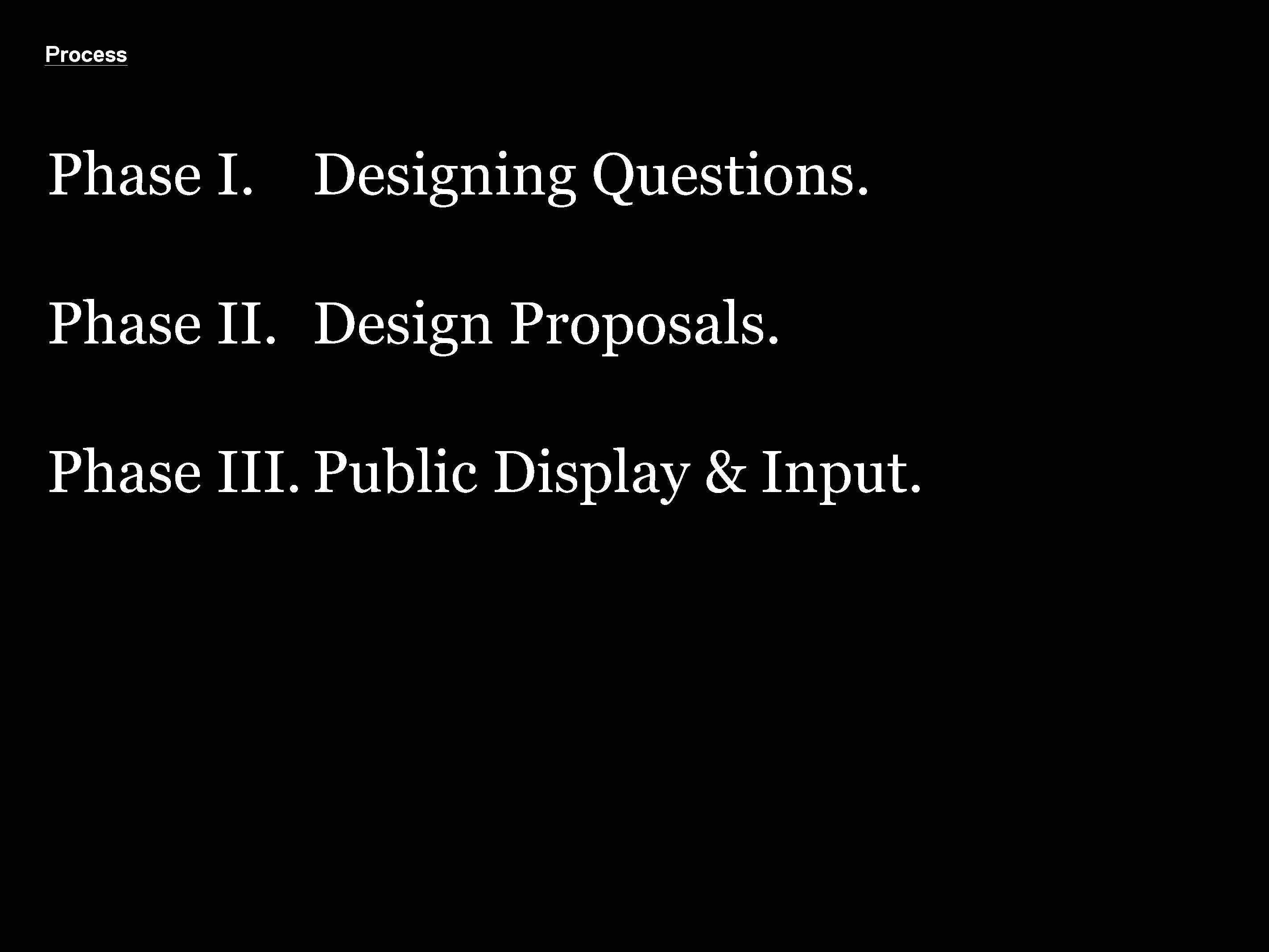

CURRICULUM DEVELOPMENT / 2018–present
Graduate research studio for MDes students
This research studio provides an introduction to advanced evidence-based design for first-year MDes students. The primary challenge is to define, design, prototype, test & revise, document, and exhibit design interventions as research methods. Translational research is defined as designing engagements with participants in a manner that shares and collects data, producing new knowledge through a mutually beneficial experience. Students explore design methods as a means to embody processes and measure results. Exploration occurs in the context of designing new ways of understanding through design.
Define. What question do you want to ask? What can be measured and/or collected? From whom? Where and why?
Design. How will you engage participants? What is the nature of the experience? What tools do you need? How do they work?
Prototype. Rapidly and iteratively prototype your intervention, research tools, communications, etc.
Test & Revise. Implement and revise the intervention and tools, customizing the design of the intervention.
Document. Collect data and document interventions, collecting data, insights, and including unexpected new directions or concepts.
Propose. Ideate, sketch, and propose concepts for new interfaces, related to your topic areas of interest and informed & supported by your research. Display. Share your research process, results, and proposals in a public display (both physical and digital). The whole class collaborates to design this display.
![]()
![]()
![]()
![]()
![]()
![]()
![]() STUDENT RESEARCH POSTERS / Spring 2019
STUDENT RESEARCH POSTERS / Spring 2019
![]()
![]()
![]()
![]()
![]()
![]()
![]()
![]()
STUDENT RESEARCH POSTERS IN PUBLIC DISPLAY / Spring 2019
Students displayed posters and prototypes summarizing their research questions, methods, prototypes, and new directions in inquiry at the University of Cincinnati’s 1819 Innovation Hub.
![]()
![]()
![]()
![]()
![]()
![]()
![]()
Define. What question do you want to ask? What can be measured and/or collected? From whom? Where and why?
Design. How will you engage participants? What is the nature of the experience? What tools do you need? How do they work?
Prototype. Rapidly and iteratively prototype your intervention, research tools, communications, etc.
Test & Revise. Implement and revise the intervention and tools, customizing the design of the intervention.
Document. Collect data and document interventions, collecting data, insights, and including unexpected new directions or concepts.
Propose. Ideate, sketch, and propose concepts for new interfaces, related to your topic areas of interest and informed & supported by your research. Display. Share your research process, results, and proposals in a public display (both physical and digital). The whole class collaborates to design this display.
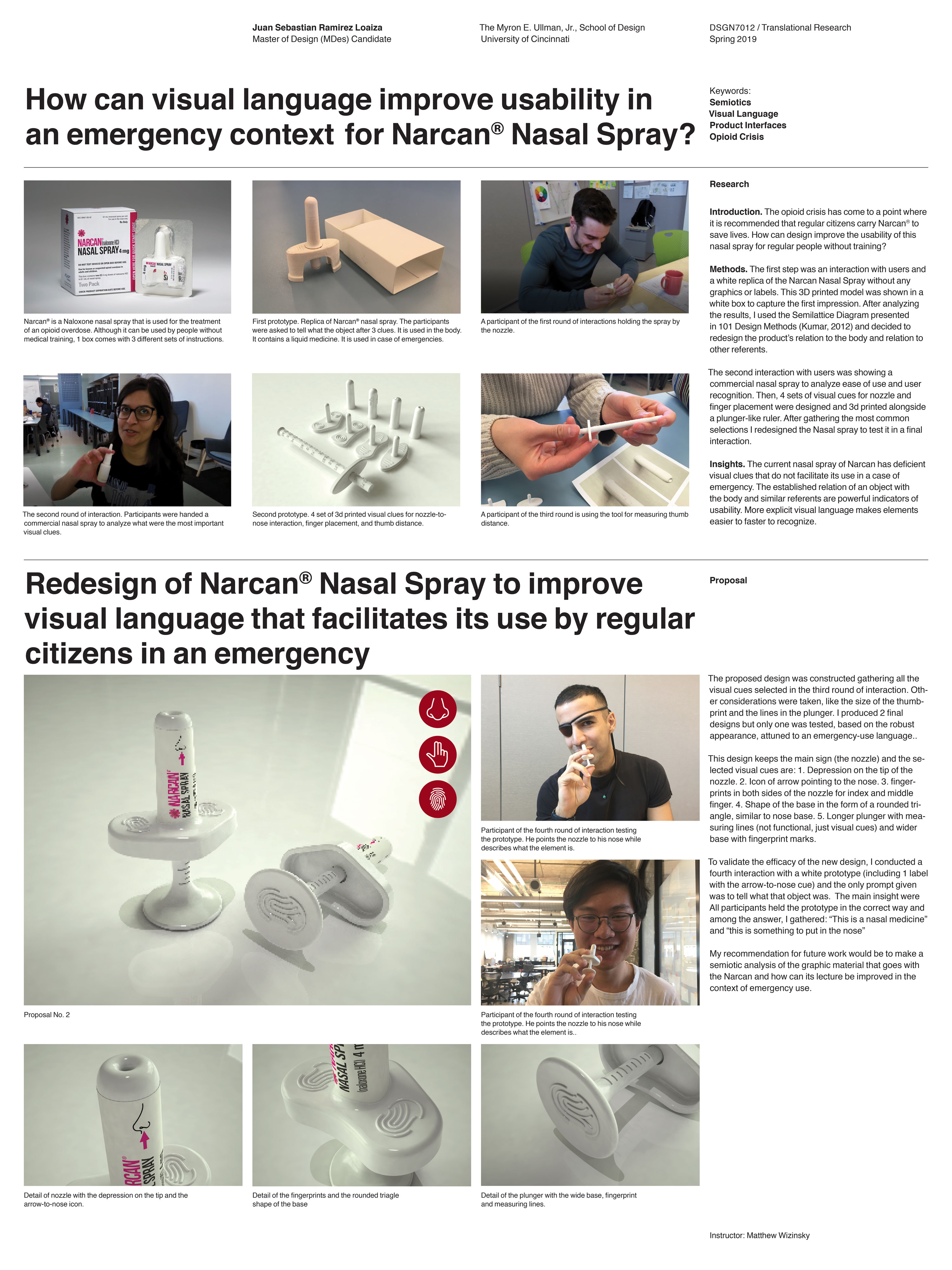

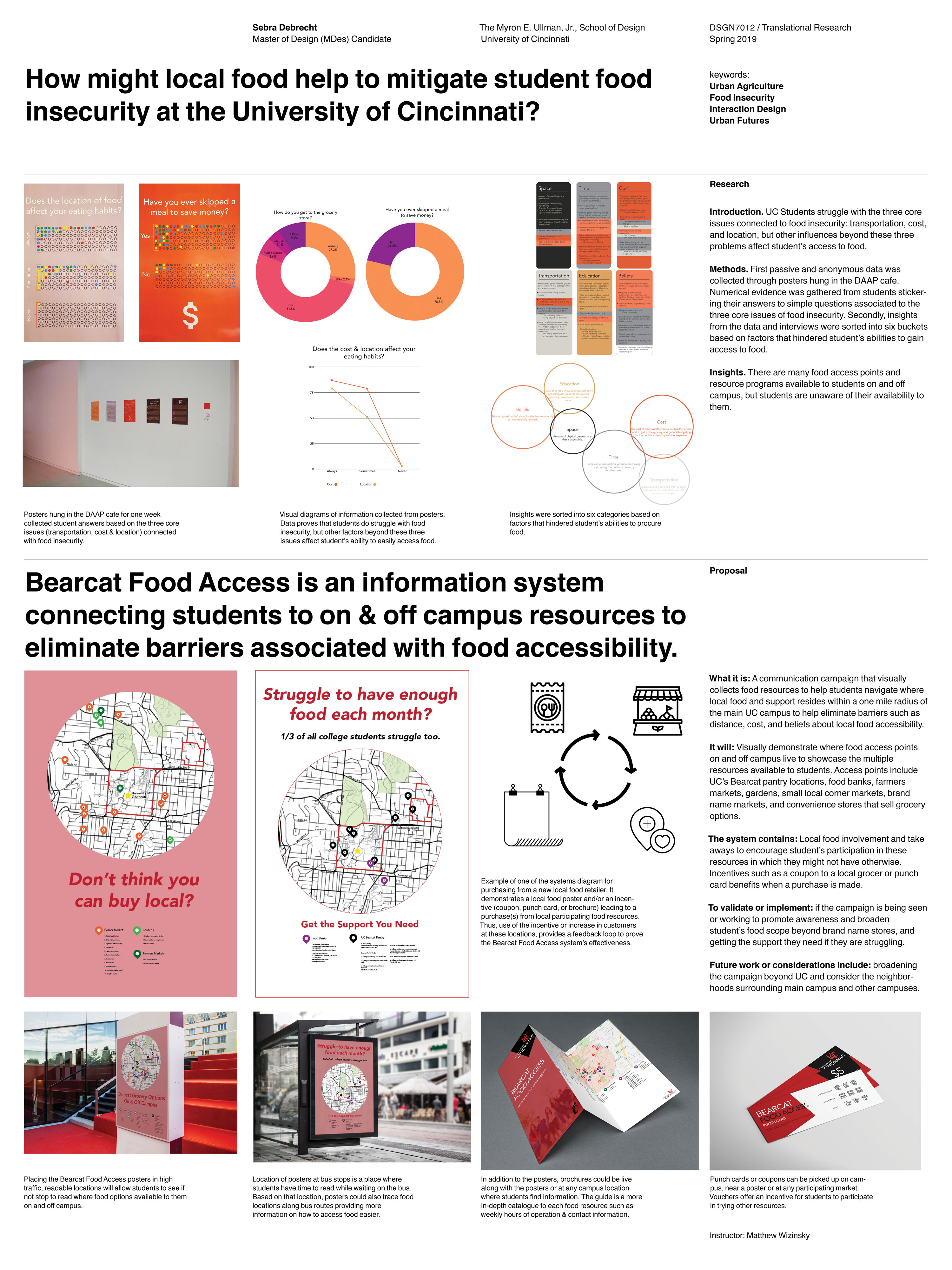
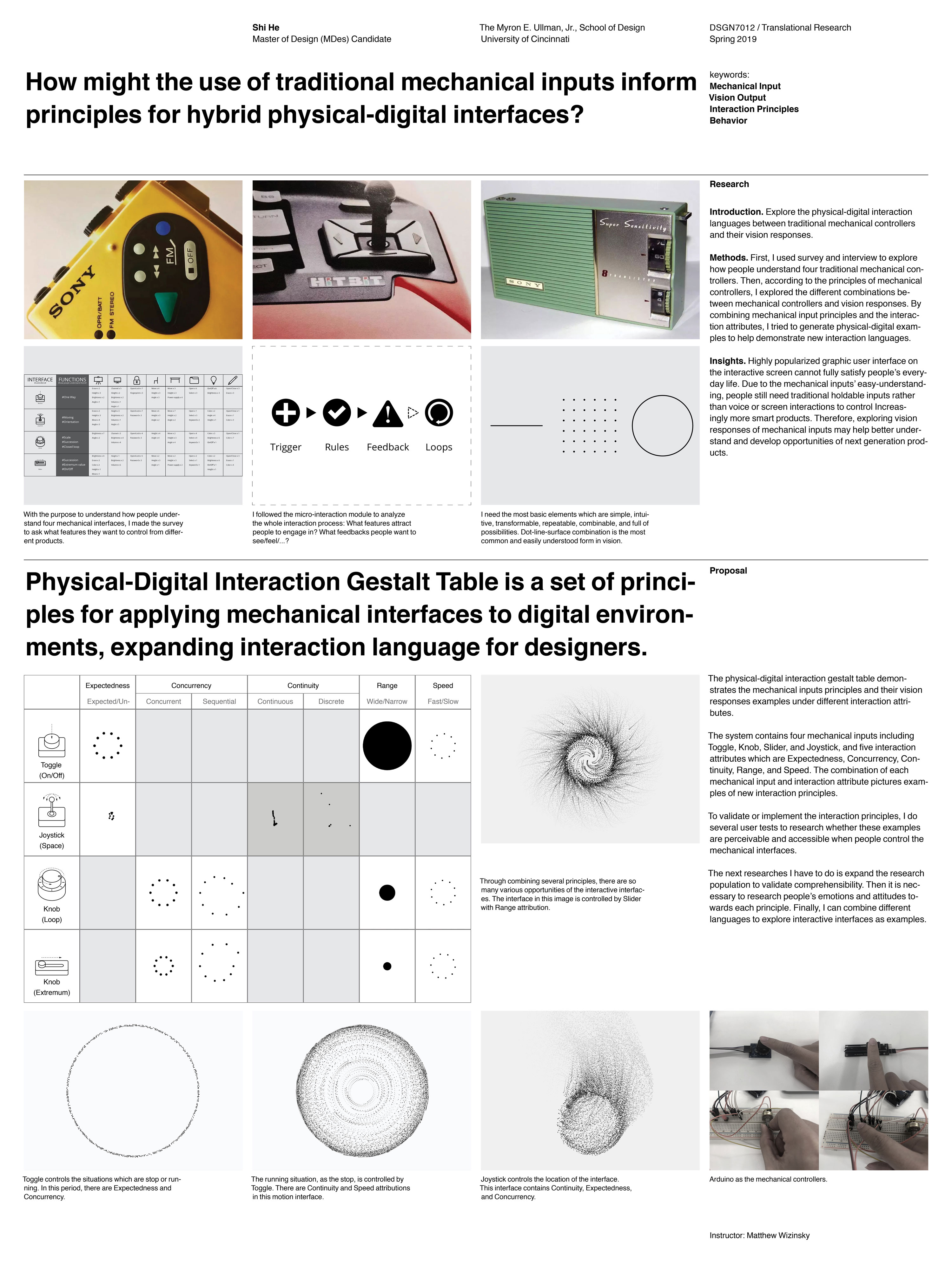
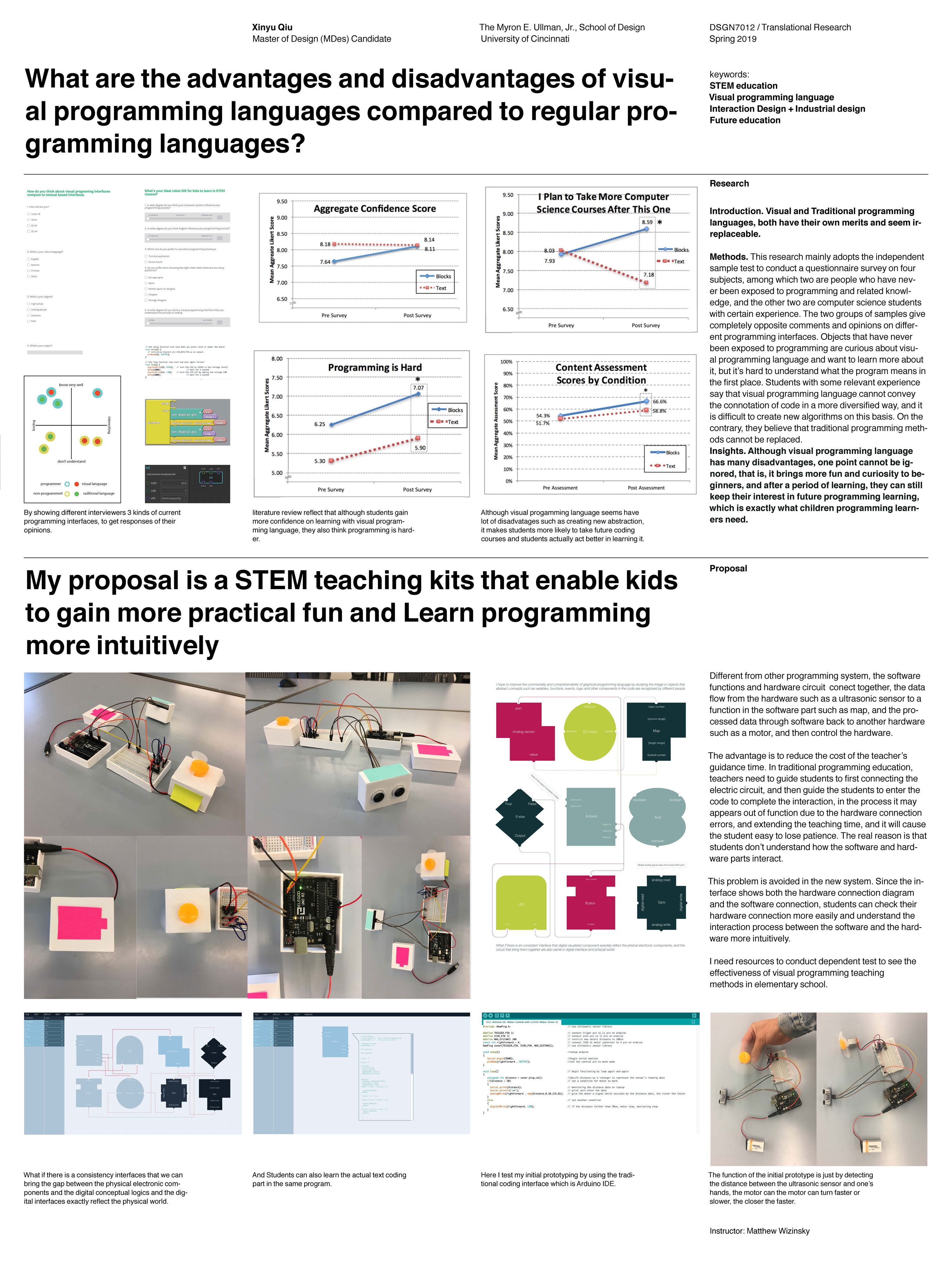
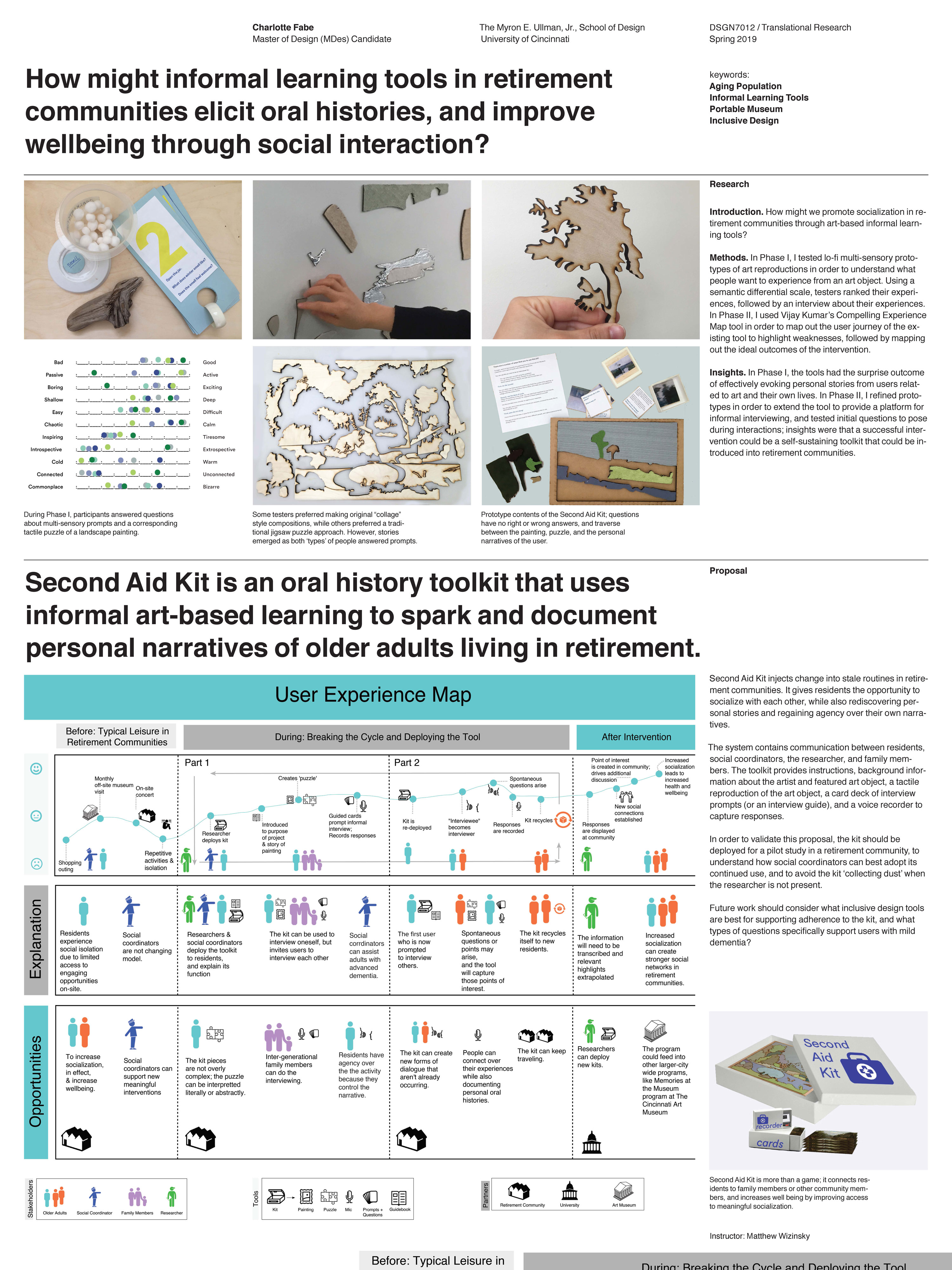


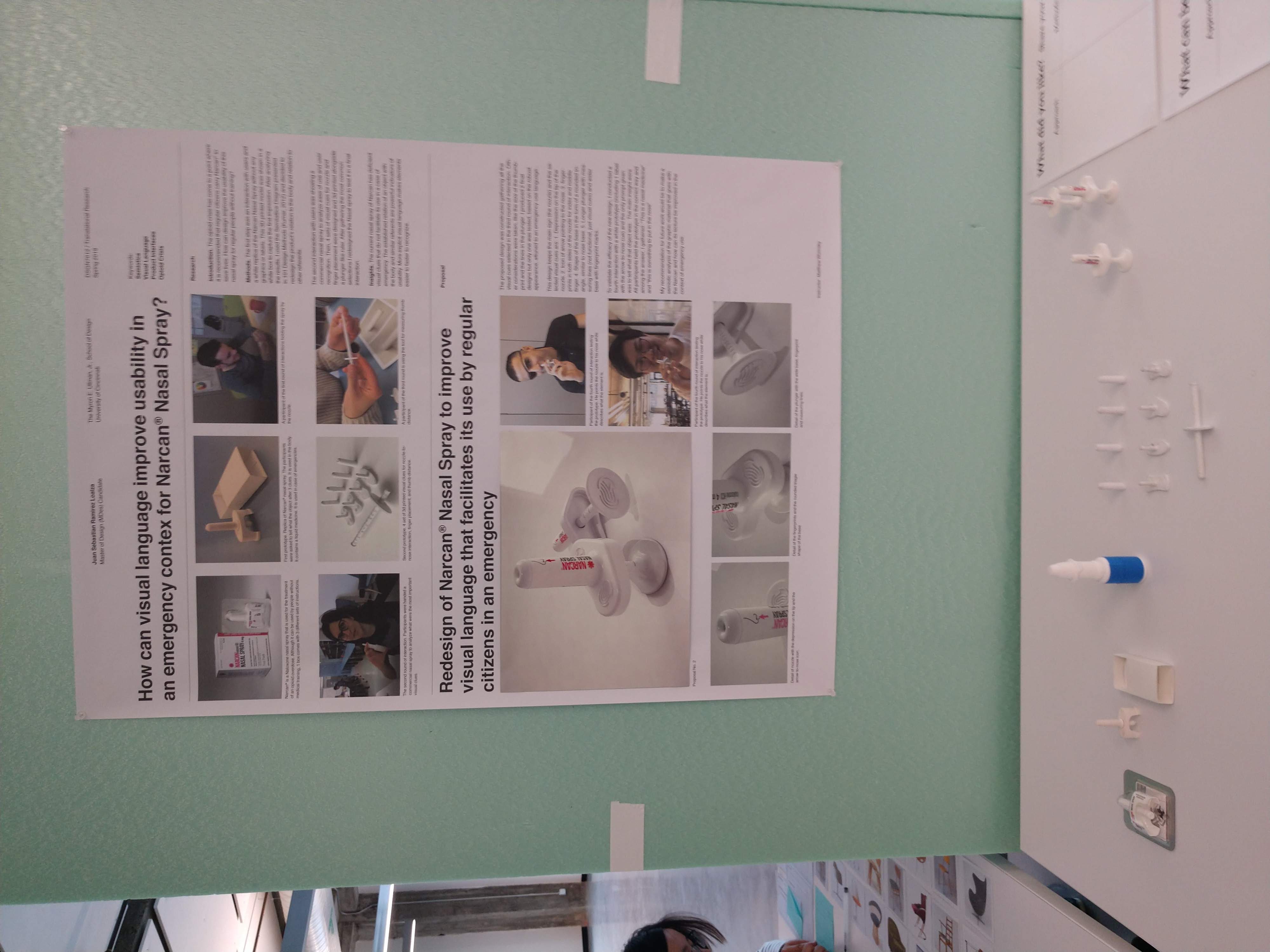
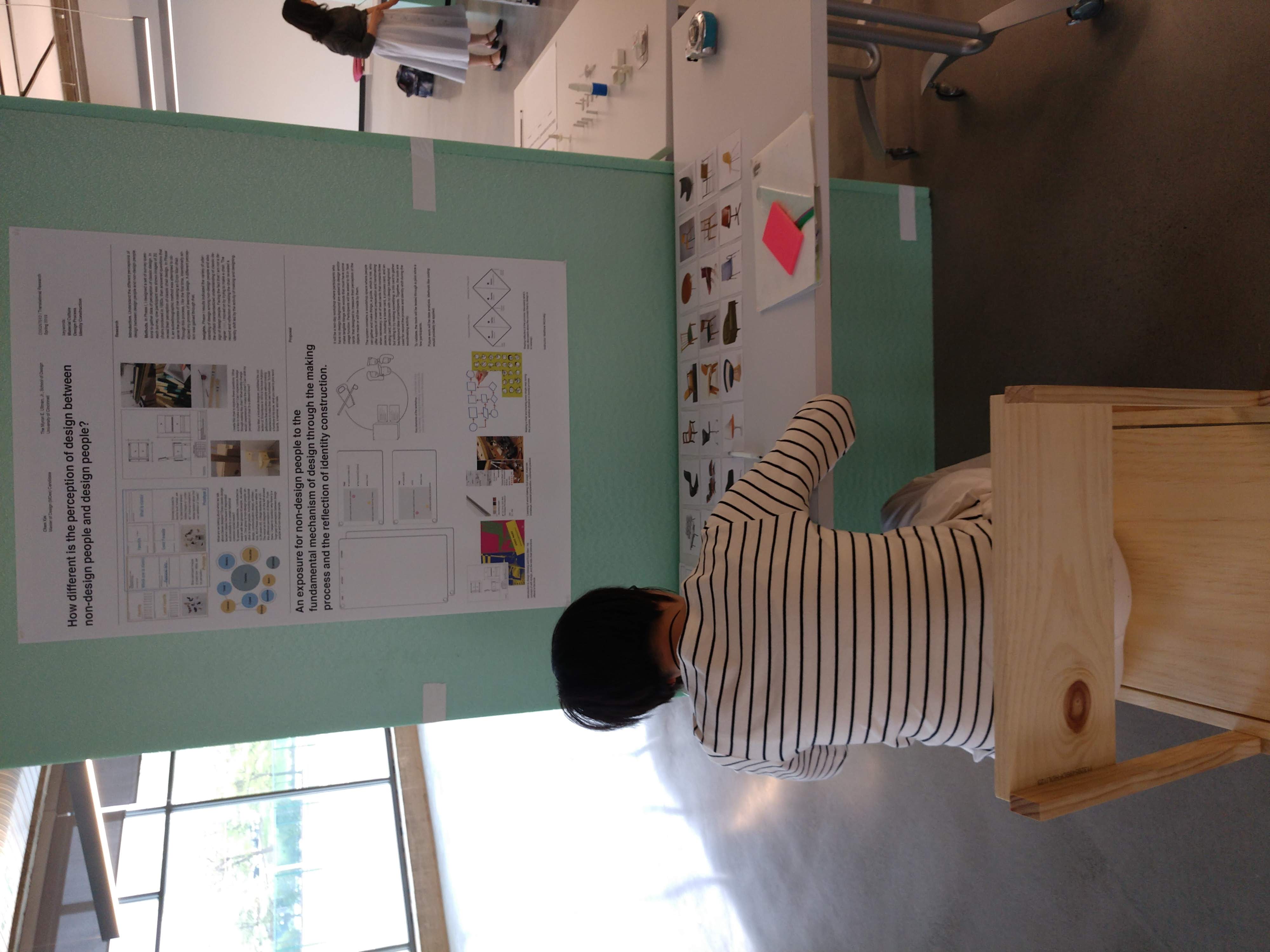

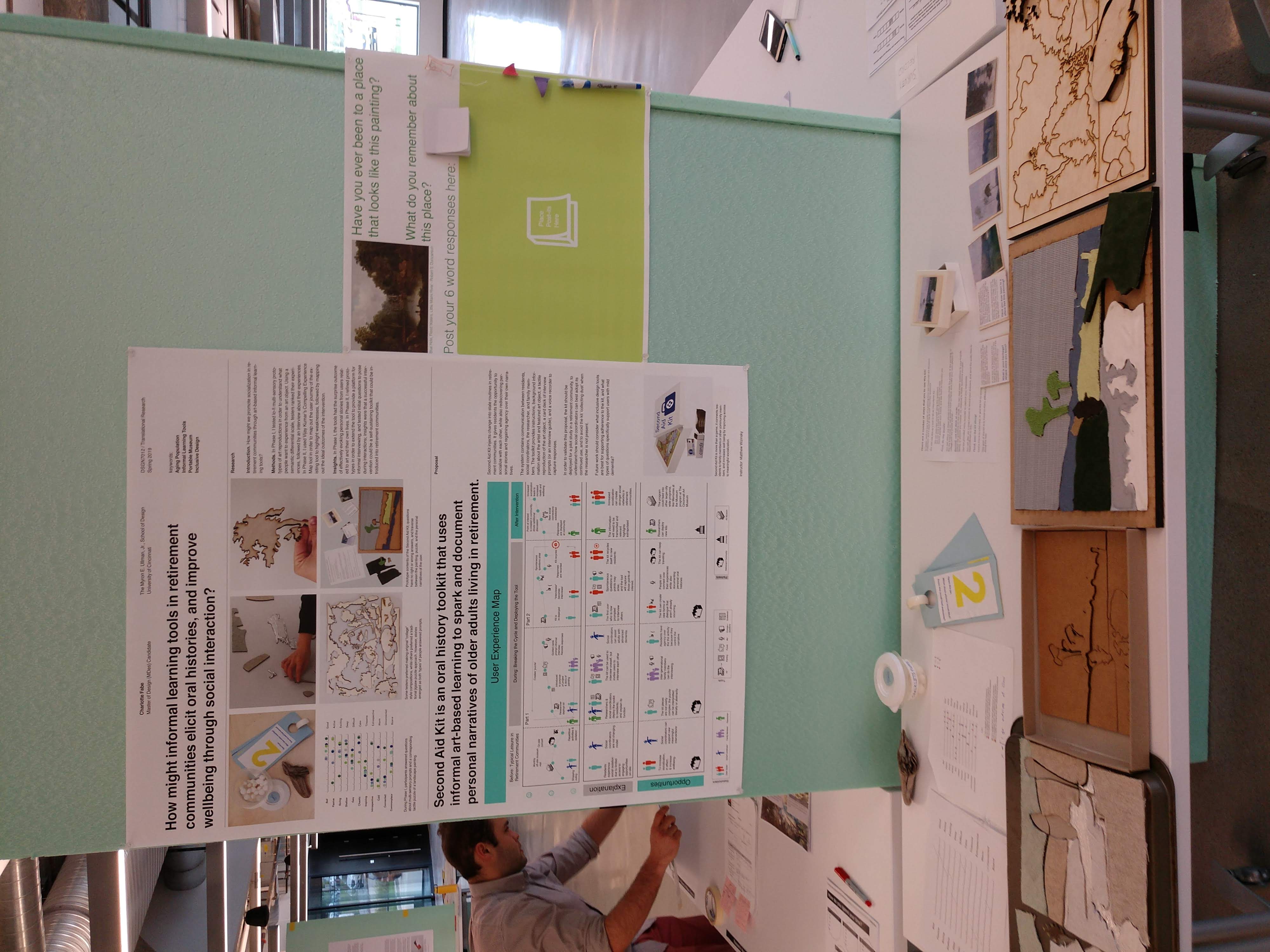
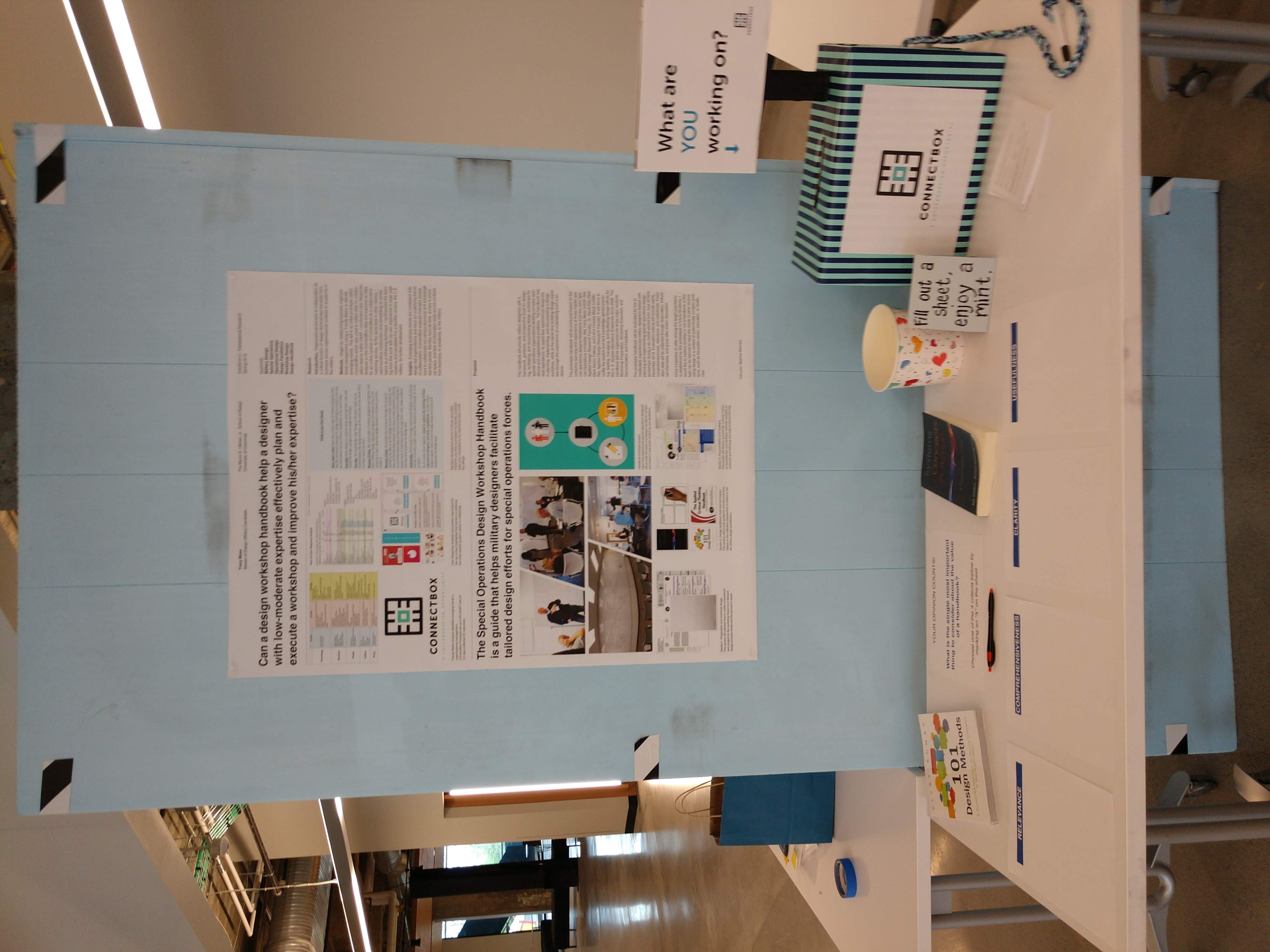


STUDENT RESEARCH POSTERS IN PUBLIC DISPLAY / Spring 2019
Students displayed posters and prototypes summarizing their research questions, methods, prototypes, and new directions in inquiry at the University of Cincinnati’s 1819 Innovation Hub.


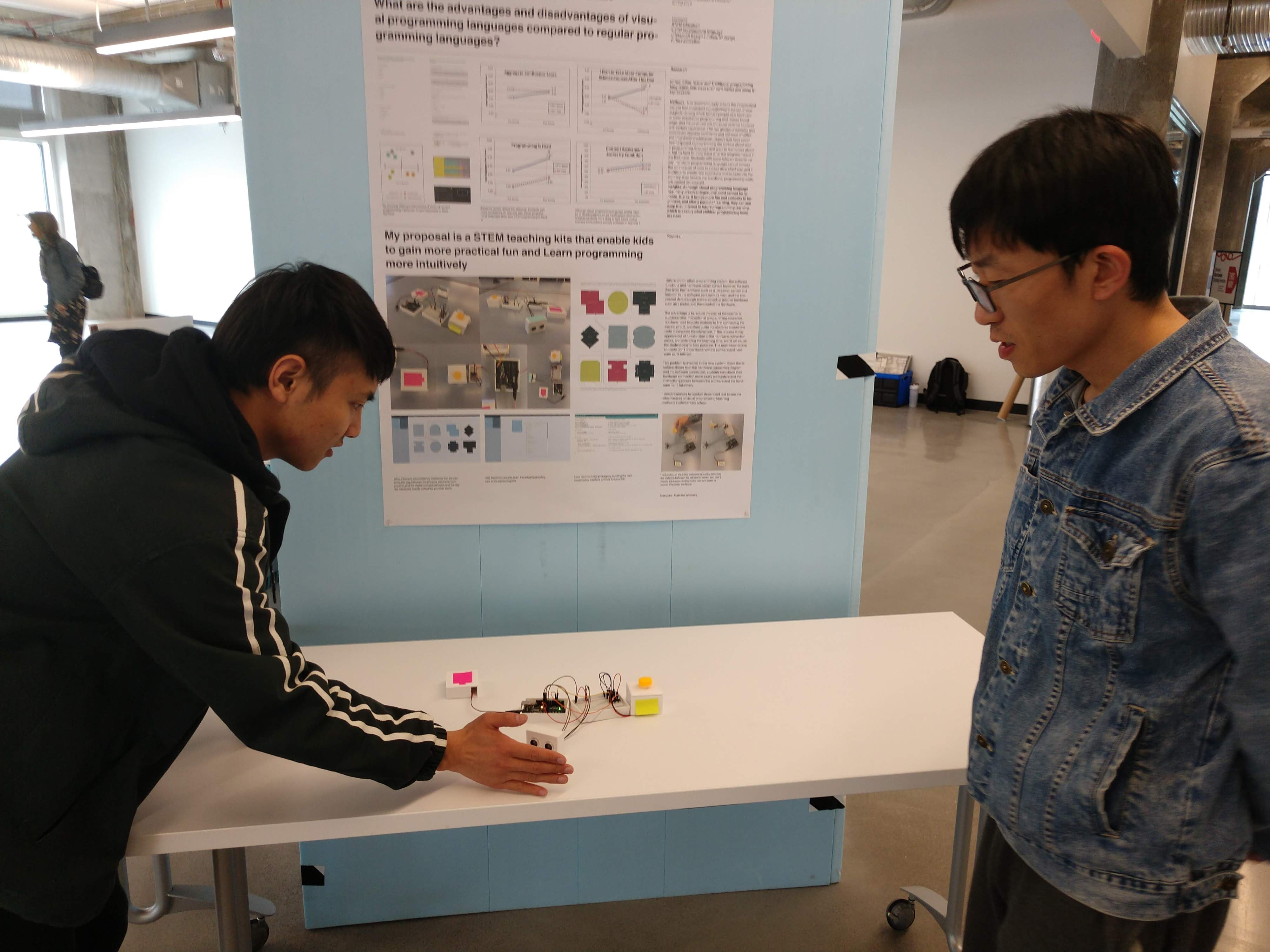

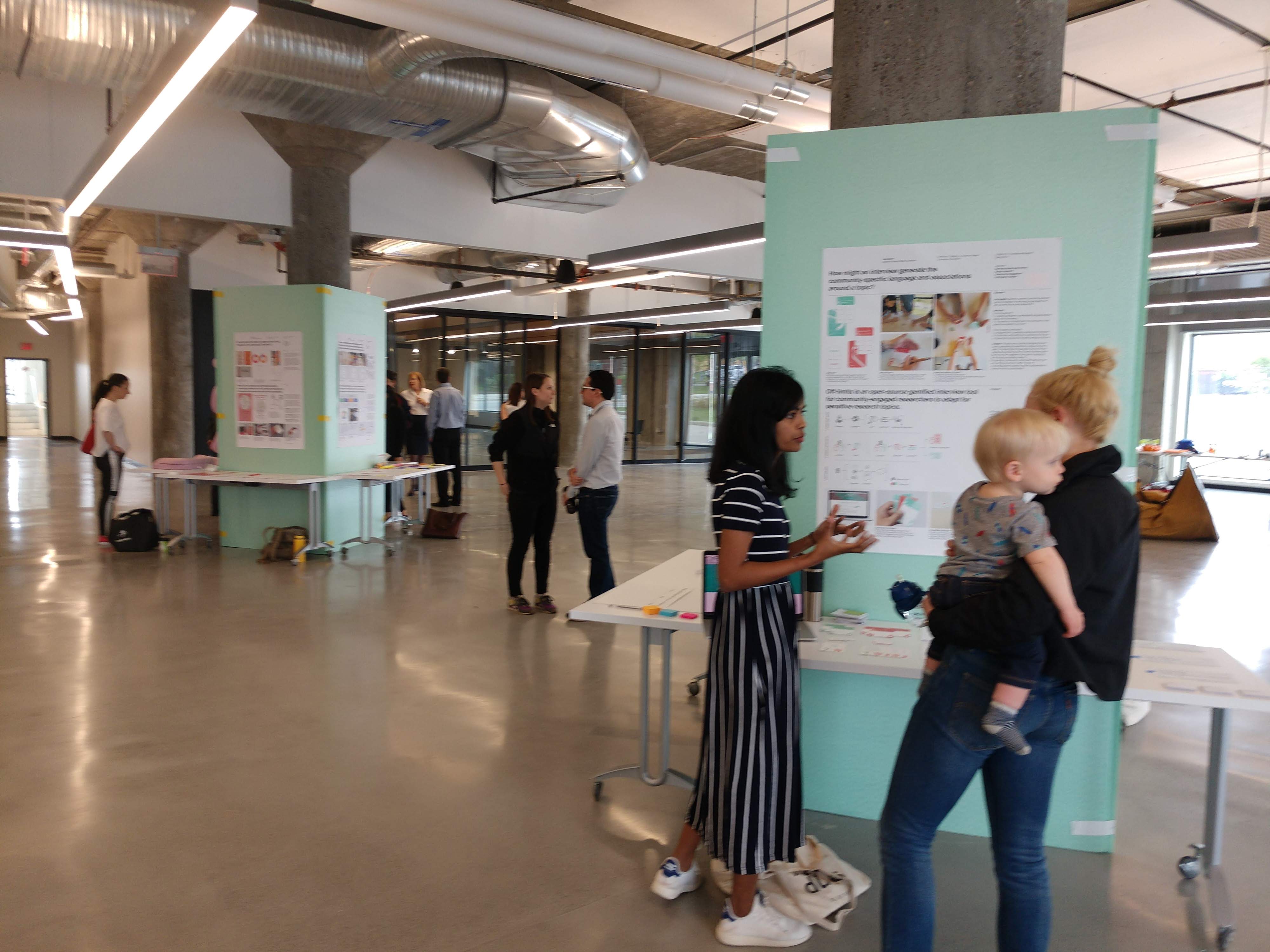
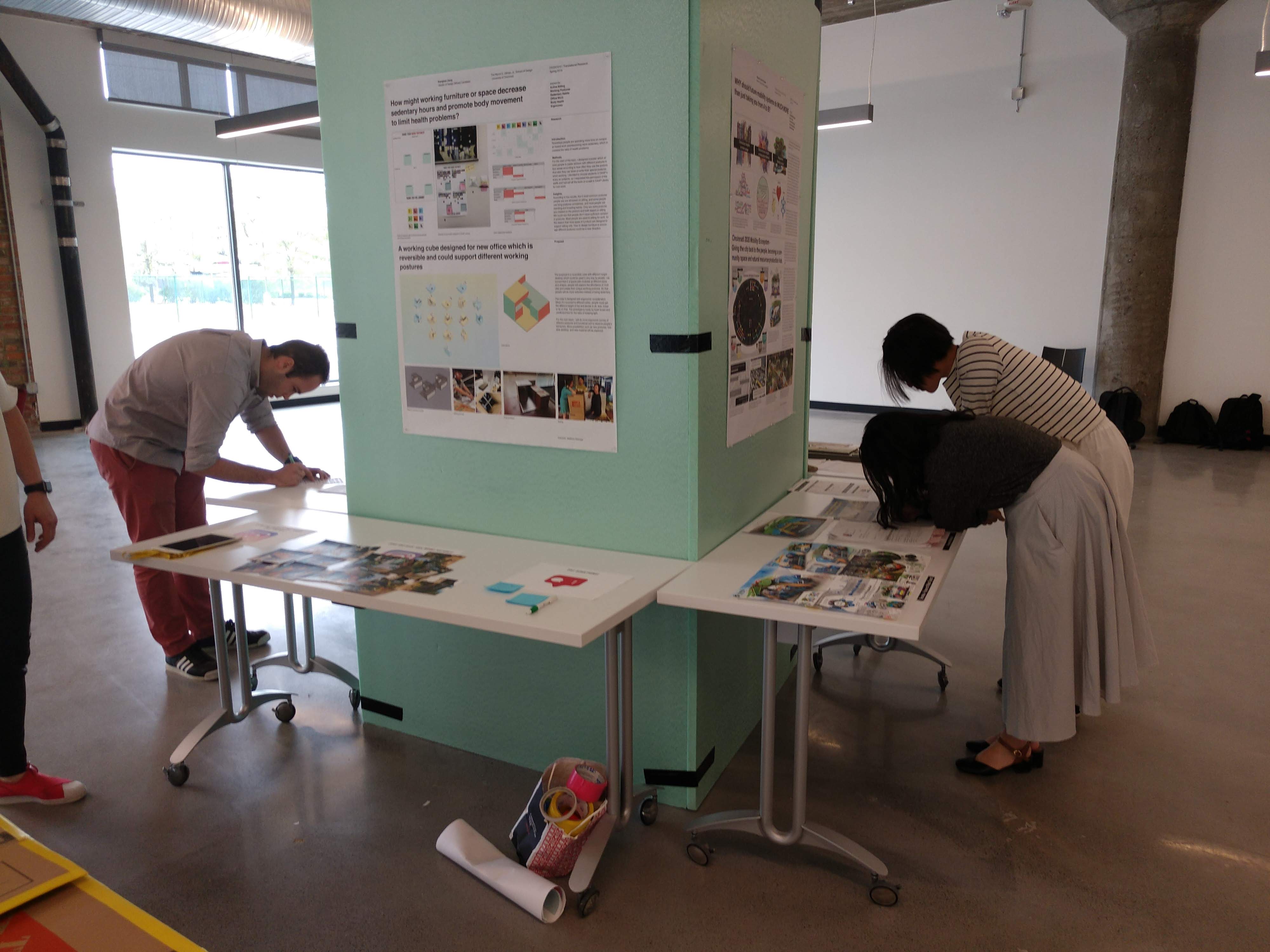
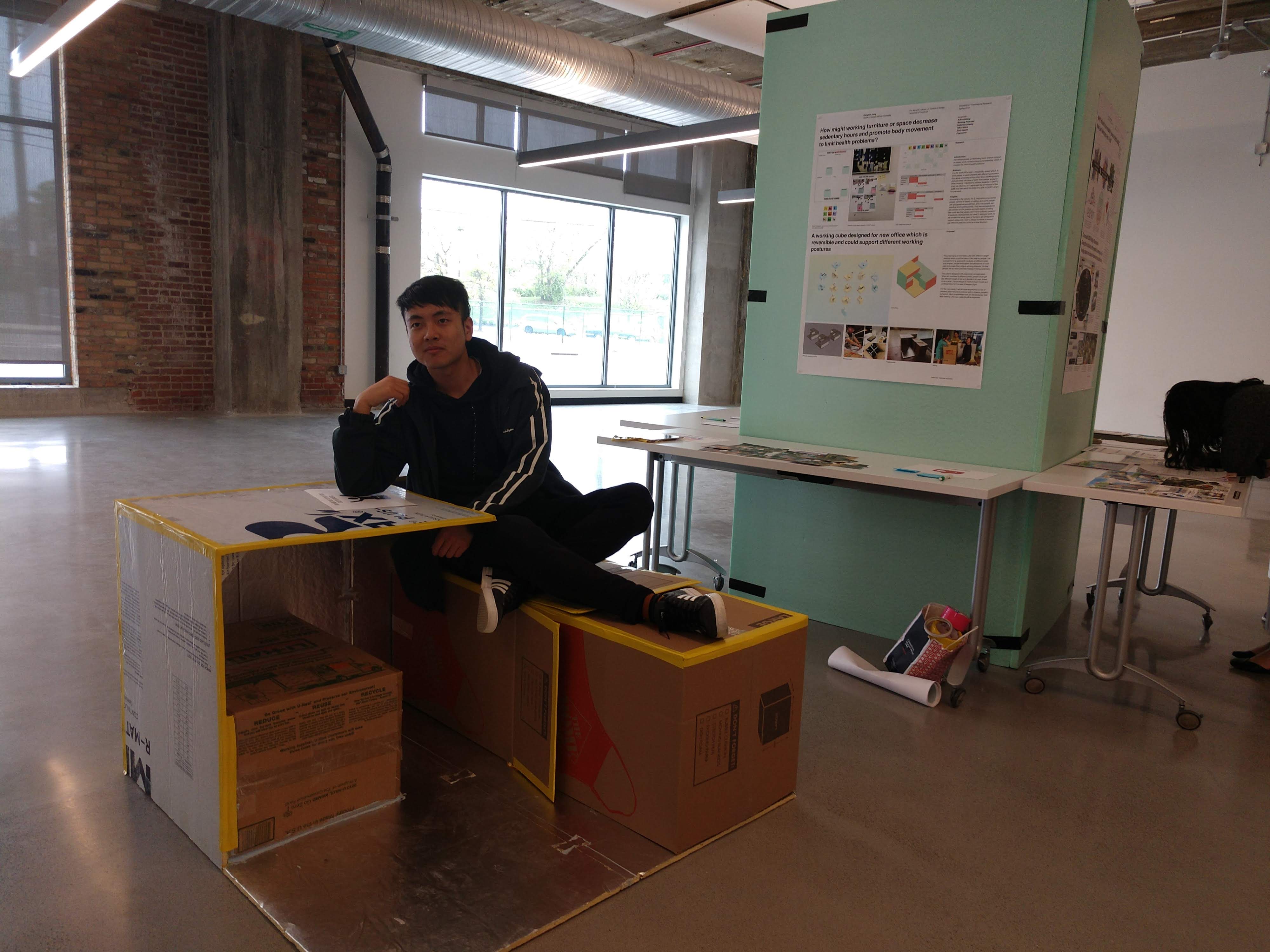
This public display as a conclusion to the semester exposed students’ projects to a wide range of faculty, researchers, and industry partners while giving first-year MDes students an experience in publicly presenting their research through posters, verbal presentations, and discussions.
RELATED PUBLICATIONS
Rebola, C. & Wizinsky, M. (2019) “Design as Understanding [&/or the Varieties of Research by Design].” Proceedings of Decipher 2018: AIGA Design Education Conference.